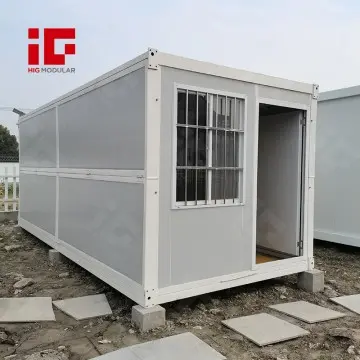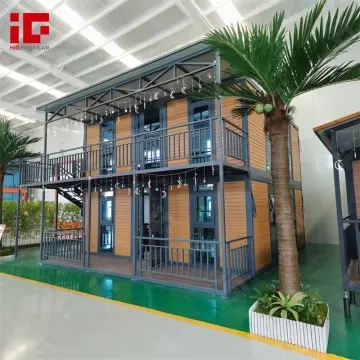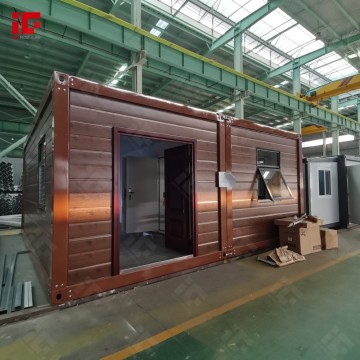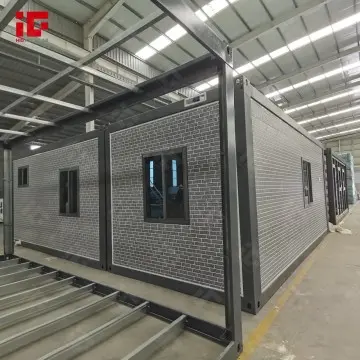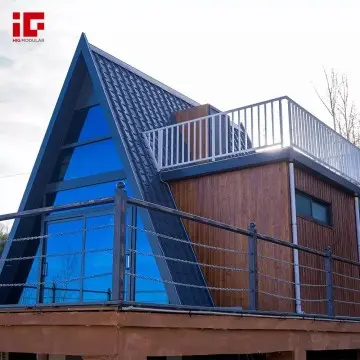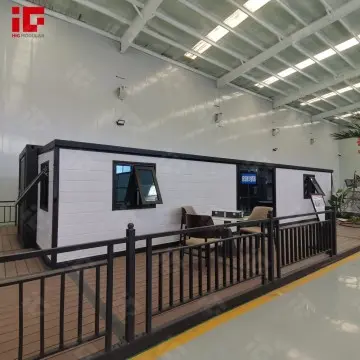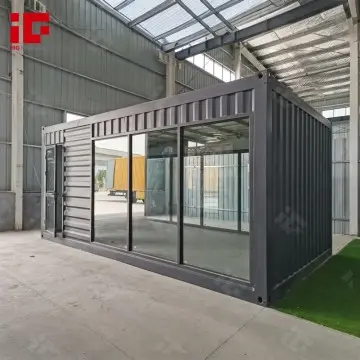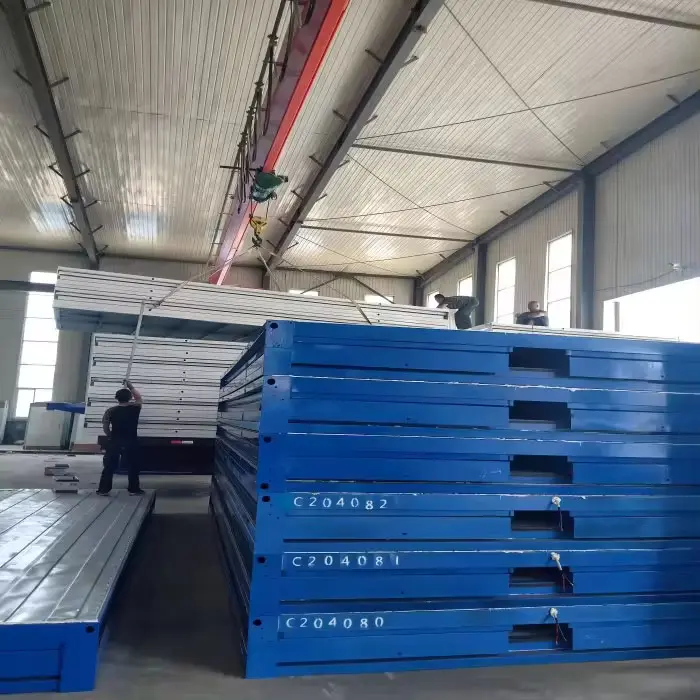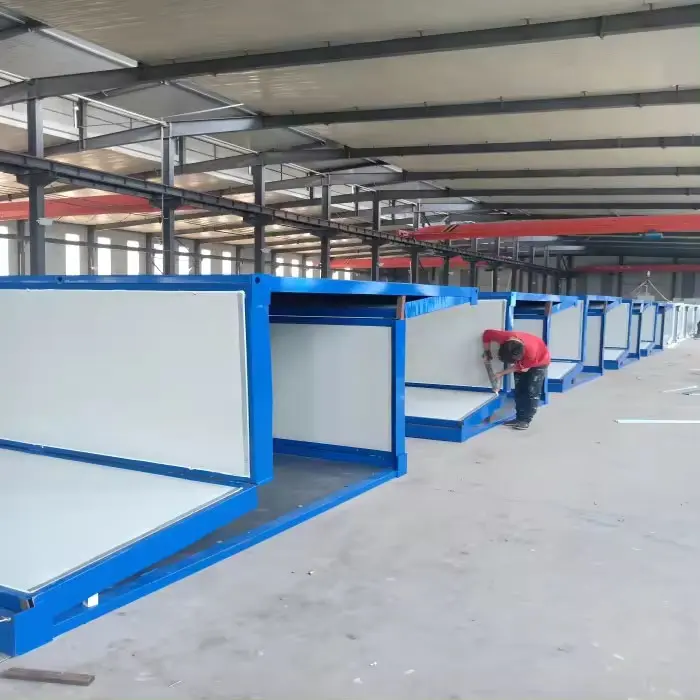Cold-Resistant Foldable Container House
Product Specifications
Dimensions: Standard dimensions are 5800mm in length x 2500mm in width x 2560mm in height, with internal dimensions of 5620mm in length x 2260mm in width x 2440mm in height.
Frame: Made from thickened galvanized steel materials to enhance stability and durability in low-temperature environments.
Walls: Utilize thickened rock wool boards, at least 50mm thick, to provide additional insulation.
Roof: Composed of 0.45mm thick cover steel plates, 40mm thick glass wool, and 0.3mm thick ceiling steel plates to ensure good heat insulation and waterproof performance.
Floor: Made of T16mm chlorox magnesium fireproof floor, providing a solid base and preventing ground cold air penetration.
Side Panels: All outer/end panels use 8kg 50mm 0.236 foam sandwich panels, with a frame of T1.2mm Q235 galvanized steel pipes.
Doors and Windows: Including 1 exterior door and 2 aluminum alloy white single-sided sliding windows, with dimensions of 977mm x 2360mm and 930/1200mm.
Folding Hinges: Using T3mm 180x76 galvanized hinges to ensure smooth folding even in low temperatures.
Electrical System: Includes CE certified electrical products to ensure safety and reliability.
Raw Materials
Galvanized Steel: Used for frames and hinges to enhance corrosion resistance and strength.
Rock Wool Board: Used for walls to provide good heat insulation and thermal retention.
Foam Sandwich Panels: Used for side panels and roofs to enhance thermal insulation.
Chlorox Magnesium Fireproof Floor: Used for the floor to provide fireproof and thermal insulation properties.
Production Process
Cutting and Welding: Advanced cutting and welding techniques are used to ensure precise cutting and solid welding of materials.
Assembly: Assembled in a strictly controlled environment to ensure precise fitting of all components.
Insulation and Thermal Treatment: Additional insulation materials are added to walls and roofs to improve cold resistance.
Quality Inspection: Quality checks are conducted at every stage of the production process to ensure high standards of the product.

Usage Scenarios
Extreme Cold Regions: Suitable for temporary housing, workstations, or warehouses in extremely cold areas.
Construction Sites: As temporary offices or worker dormitories on construction sites.
Emergency Relief: As emergency relief stations or temporary shelters during natural disasters.
Outdoor Activities: As temporary facilities for outdoor activities, such as accommodation units in ski resorts.
Quality Inspection
Material Testing: All raw materials are rigorously tested to ensure they meet cold resistance standards.
Structural Testing: The finished product undergoes structural strength testing to ensure stability in extreme low temperatures.
Insulation Performance Testing: Insulation materials are tested to ensure their effectiveness in low-temperature environments.
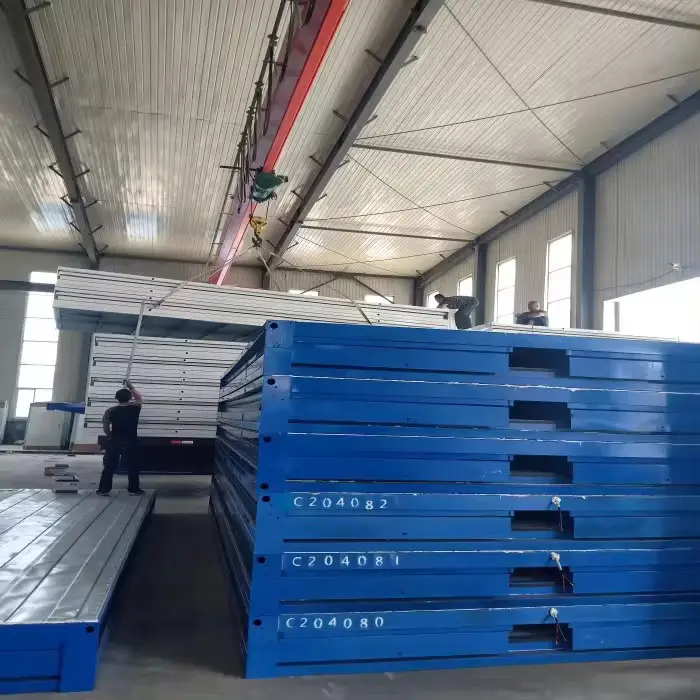
Packaging and Transportation
Packaging: Moisture-proof and frost-proof packaging materials are used to ensure that the product is not damaged during transportation.
Transportation: Special transportation methods, such as refrigerated containers, are used to protect the product from extreme temperature impacts.
After-Sales Service
Installation Guidance: Detailed installation guidance is provided to ensure customers can correctly install and use the product.
Repair Services: Professional repair services are offered to address potential malfunctions and damages.
Customer Consultation: Customer consultation services are provided to answer questions about product use and maintenance.
Payment Settlement
Contract Signing: A certain percentage of the prepayment is required after the contract is signed.
Goods Acceptance: The customer conducts an acceptance upon arrival of the goods and pays the remaining amount after confirmation.
Invoice Provision: A formal value-added tax (VAT) invoice is provided for financial processing by the customer.

